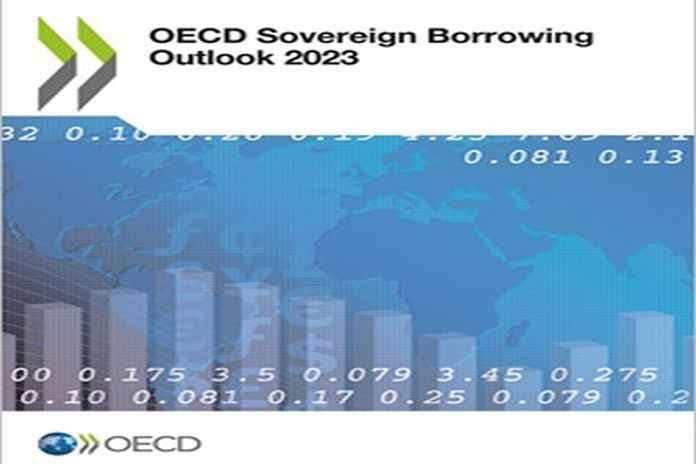PARIS, France, (OECD) – Sovereign borrowing needs are expected to increase in 2023 against the backdrop of the financial and economic spillovers of Russia’s war of aggression against Ukraine, as many OECD countries seek to cushion households and businesses from rising prices, according to a new OECD report.
The Sovereign Borrowing Outlook 2023 estimates that gross borrowing requirements will increase by around 6 percent in 2023, to total US$12.9 trillion, up from US$12.2 trillion in 2022.
Net borrowing needs are also expected to rise in 2023 to US$10.6 trillion, from US$10.2 trillion in 2022.
Outstanding central government debt declined as a share of GDP, from a peak of 88 percent in 2020 to 83 percent in 2022, and is projected to remain stable in 2023, though still about 10 percentage points above pre-pandemic levels.
Almost half of OECD marketable debt – some USD 23 trillion – will fall due over the next three years. Borrowing costs have more than doubled for OECD sovereigns since 2021, with the average yield of sovereign bonds at issuance rising from 1.4 percent in 2021 to 3.3 percent in 2022, and look set to rise further still in the near term. As a result, countries face elevated refinancing risk, and many governments will spend a higher proportion of their budgets servicing debt and may face greater fiscal constraints in the years ahead.
“2023 marks the end of a long period of favourable funding conditions for sovereign issuers as they adjust to new realities and a rapidly evolving market environment, compounded by the financial and economic spillovers of Russia’s war of aggression against Ukraine,” OECD secretary-general Mathias Cormann said. “These latest developments underscore the importance of credible institutional frameworks for debt management, with the capacity for public debt managers to adapt and respond to shifting market conditions”.
Sovereign issuers face further challenges beyond higher rates, according to the report. Central bank demand for bonds has largely evaporated, leaving the private sector to absorb high volumes of new issuance and refinancings.
Liquidity in markets has also deteriorated, potentially increasing borrowing costs further and giving less flexibility to debt managers to adapt to shifting borrowing needs. Emerging market and developing economies can face heightened risks in this market context, as foreign investors rebalance portfolios in ‘flight to safety’ responses.
The Outlook also tracks the contribution of sovereign issuers in catalysing sustainable investment. The total stock of sovereign sustainable bonds now exceeds US$325 billion, 75 percent of which are focused on climate and environmental projects. While the total value of sustainable bond issuance declined between 2021 and 2022, the number of countries issuing such instruments is expanding, with ten new countries in 2022 and a further five in the first four months of 2023. Investor demand appears strong, and this momentum is expected to continue in the coming years.
Working with over 100 countries, the OECD is a global policy forum that promotes policies to preserve individual liberty and improve the economic and social well-being of people around the world.





